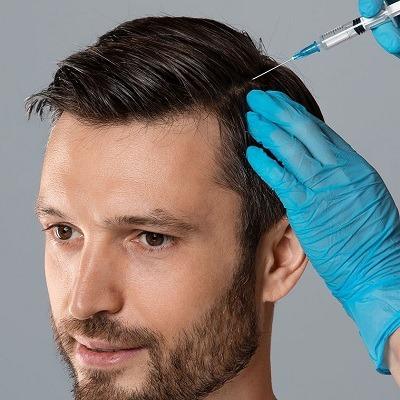
Knee pain and arthritis can significantly impact mobility and quality of life, making even simple tasks a challenge. In Islamabad, individuals seeking relief from these debilitating conditions are increasingly exploring PRP in Islamabad as a natural and innovative treatment option. This blog post will delve into the science behind PRP, explaining how it works to alleviate knee pain and address arthritis, its benefits, what to expect during the procedure, and why it's becoming a popular choice for those seeking a less invasive and potentially more sustainable solution.
Understanding Knee Pain and Arthritis:
Knee pain can stem from various causes, including:
- Osteoarthritis: The most common form of arthritis, osteoarthritis involves the breakdown of cartilage in the knee joint, leading to pain, stiffness, and reduced mobility.
- Rheumatoid Arthritis: An autoimmune disease that causes inflammation in the joints, including the knee.
- Meniscus Tears: Tears in the meniscus, a C-shaped piece of cartilage that cushions the knee joint, can cause pain, swelling, and instability.
- Ligament Injuries: Injuries to the ligaments that stabilize the knee joint, such as the ACL or MCL, can result in pain and instability.
- Tendinitis: Inflammation of the tendons surrounding the knee joint can cause pain and tenderness.
- Bursitis: Inflammation of the bursae, fluid-filled sacs that cushion the knee joint, can lead to pain and swelling.
How PRP Therapy Works for Knee Pain and Arthritis:
PRP therapy harnesses the regenerative properties of your own blood to promote healing and reduce pain in damaged knees. The process involves:
- Blood Draw: A small blood sample is taken from your arm.
- PRP Processing: The blood is processed using a centrifuge to separate the platelet-rich plasma (PRP) from other blood components. This plasma contains a high concentration of growth factors.
- PRP Injection: The concentrated PRP is injected directly into the affected knee joint.
The Science Behind PRP's Pain-Relieving and Healing Effects:
Platelets contain a wealth of growth factors, including:
- Platelet-Derived Growth Factor (PDGF): Stimulates cell growth, division, and tissue repair.
- Transforming Growth Factor-beta (TGF-β): Promotes cartilage repair and reduces inflammation.
- Vascular Endothelial Growth Factor (VEGF): Stimulates the formation of new blood vessels, improving blood supply to the injured area.
When PRP is injected into a damaged knee, these growth factors work synergistically to:
- Reduce Inflammation: Growth factors help to modulate the inflammatory response, reducing pain and swelling in the knee joint. This is particularly beneficial in cases of arthritis where inflammation plays a significant role.
- Promote Cartilage Repair: PRP can stimulate the production of new cartilage cells (chondrocytes) and promote the healing of damaged cartilage. This is crucial in osteoarthritis, where cartilage breakdown is the primary issue.
- Improve Joint Lubrication: PRP may stimulate the production of hyaluronic acid, a key component of synovial fluid, which lubricates the joint and reduces friction.
- Enhance Blood Supply: Improved blood flow to the knee joint delivers essential nutrients and oxygen, promoting healing and tissue regeneration.
- Stimulate the Body's Natural Healing Process: PRP harnesses the body's own healing mechanisms to repair damaged tissues and promote regeneration.
Benefits of PRP Therapy for Knee Pain and Arthritis in Islamabad:
- Natural and Safe: PRP uses your own blood, minimizing the risk of allergic reactions or adverse side effects.
- Minimally Invasive: The procedure involves injections, making it minimally invasive with minimal downtime.
- Targets the Source of Pain: PRP is injected directly into the affected knee joint, targeting the source of pain and promoting healing at the site of injury.
- Long-Lasting Pain Relief: Many patients experience significant and long-lasting pain relief after a series of PRP treatments.
- Improved Joint Function: PRP can improve joint function, mobility, and range of motion.
- Potential to Delay or Avoid Surgery: In some cases, PRP therapy may help to delay or even avoid the need for more invasive surgical procedures, such as knee replacement.
- Faster Recovery: PRP may contribute to a faster recovery after knee surgery or injury.
What to Expect During a PRP Treatment for Knee Pain and Arthritis in Islamabad:
A typical PRP treatment session for knee pain involves:
- Consultation: A thorough consultation with an orthopedic specialist or pain management physician to assess your knee pain and determine if PRP is the right treatment for you.
- Blood Draw: A small blood sample is taken from your arm.
- PRP Preparation: The blood is processed to isolate the platelet-rich plasma.
- Knee Preparation: The area around the affected knee joint is cleaned and sometimes numbed with a local anesthetic.
- PRP Injection: The PRP is injected directly into the knee joint space.
- Post-Treatment Care: You may experience some mild soreness or swelling at the injection site, which usually subsides within a few days. Your doctor will provide post-treatment care instructions, which may include rest, ice, and pain medication.
Number of Sessions and Results:
The number of PRP sessions recommended for optimal results varies depending on the individual's condition and the severity of joint damage. Typically, a series of 1-3 injections spaced several weeks apart is recommended. You may start to experience pain relief and improved joint function within a few weeks after the initial treatment, with continued improvement over several months.
Choosing a Reputable Clinic in Islamabad:
Selecting the right clinic for your PRP treatment is crucial for achieving the best possible results. Look for clinics in Islamabad that have:
- Experienced and Qualified Professionals: Ensure the clinic is staffed by orthopedic specialists or pain management physicians with extensive experience in PRP therapy and injection techniques.
- Advanced PRP Techniques and Technology: Inquire about the PRP processing techniques and technology used by the clinic. The quality of PRP preparation is essential for optimal results.
- Strict Hygiene and Safety Standards: Ensure the clinic adheres to strict hygiene and safety protocols.
- Positive Patient Reviews and Testimonials: Check online reviews and testimonials from previous patients.
PRP Treatment vs. Other Knee Pain and Arthritis Treatments:
While other treatments for knee pain and arthritis exist, such as pain medications, physical therapy, cortisone injections, and surgery, PRP therapy offers a natural and potentially more sustainable approach by addressing the underlying cause of pain and promoting healing. It's a minimally invasive option with minimal downtime, making it a popular choice for those seeking a more holistic and less invasive solution.
Conclusion:
If you're experiencing chronic knee pain or struggling with arthritis in Islamabad, PRP therapy is a compelling option to consider. Its ability to reduce inflammation, promote cartilage repair, improve joint lubrication, and enhance blood supply makes it a popular choice for those looking to regain mobility, reduce pain, and improve their quality of life. By consulting with a qualified orthopedic specialist or pain management physician and choosing a reputable clinic, you can take the first step toward finding relief from knee pain and returning to an active lifestyle. Remember, investing in your joint health is an investment in your overall well-being.

